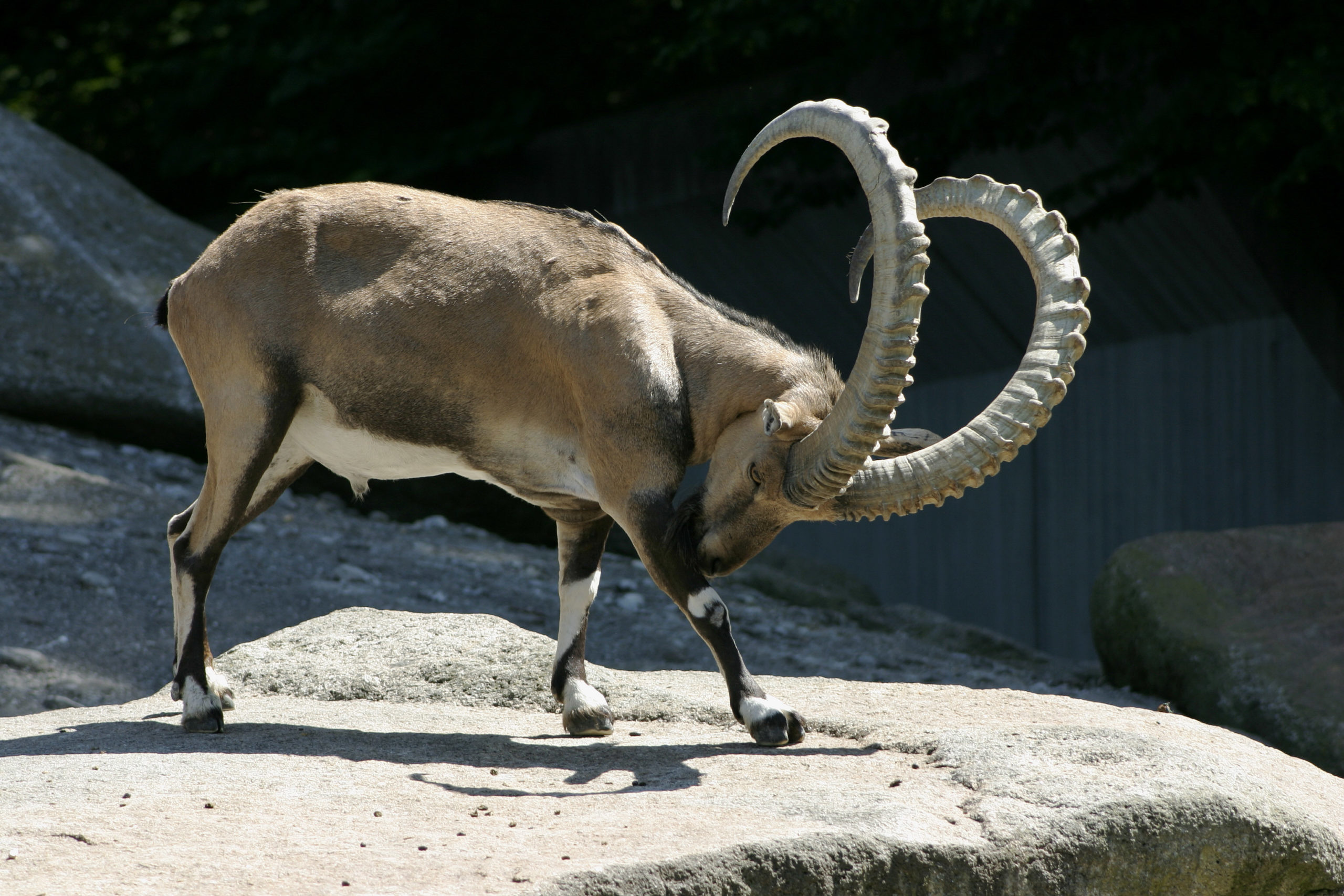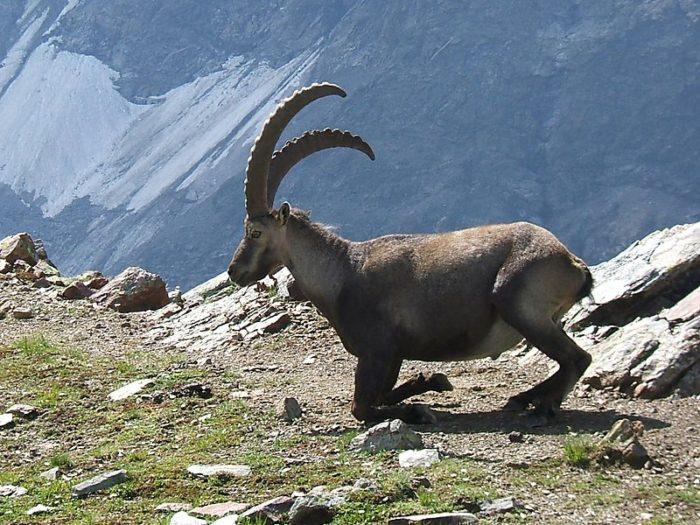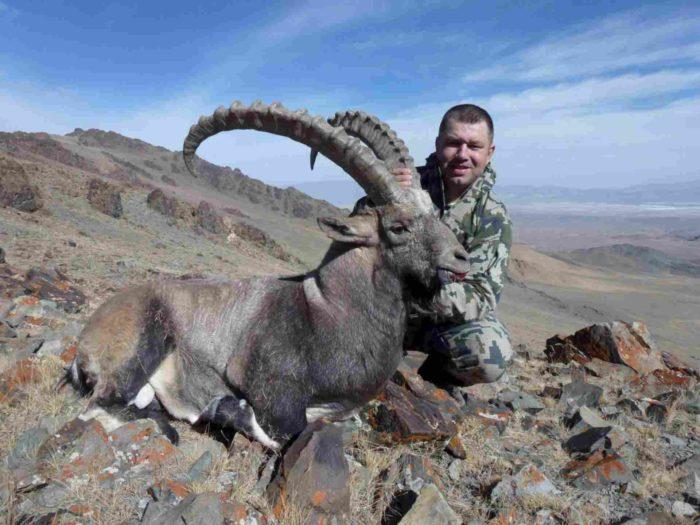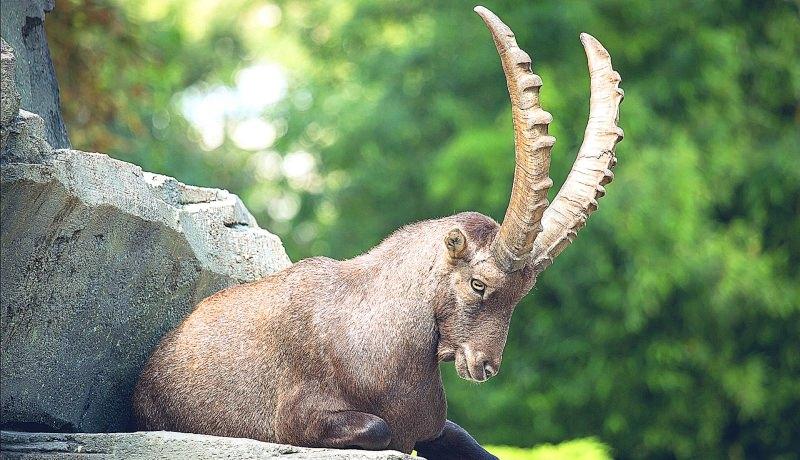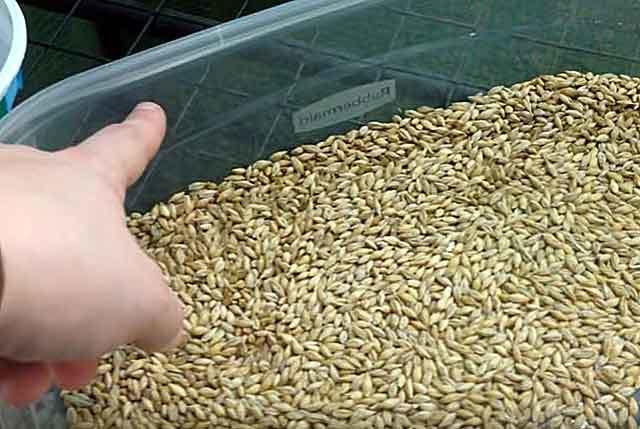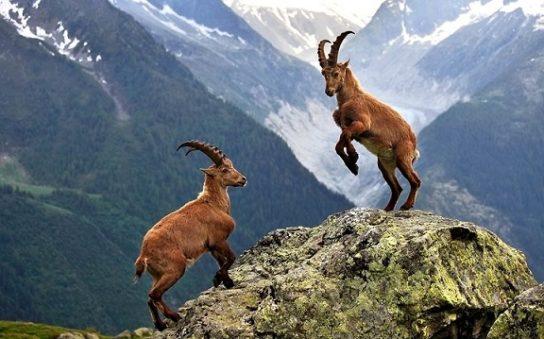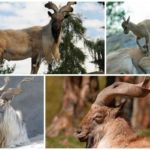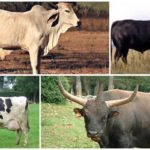There are animals in nature that are capable of moving where, according to the laws of physics, it is simply impossible to stay. We are talking about an alpine mountain goat. Its second name is ibex. These representatives of the fauna are among the most dexterous climbers. Among the rocks they hide from natural enemies, because few predators can climb a vertical stone wall. In appearance, these animals resemble the mythical ibex.
Description and characteristics of the animal
Mountain goats are medium-sized artiodactyl animals. Alpine mountain goats have well-defined sexual dimorphism. Goats are smaller in size than goats. At the withers, females are no more than 70-80 cm, their weight is about 40 kg. The height of males is 90-100 cm, weight reaches 100 kg.
The main difference between individuals of different sexes is the horns. In goats they are small, from 15 cm to 18 cm, similar to daggers and slightly bent back. The male Ibex has huge horns, up to 100 cm long, curved in a half ring towards the back. In goats older than six to seven years, they can weigh 10-15 kg.
The coat is thick and hard. In summer, goats have reddish fur, while males have brown fur. The limbs and tail are darker than the fur on the body, most often they are black or brown. In the middle of the belly and near the anus, the fur is lighter, almost white. By winter, Alpine goats molt and turn gray.
Advantages and disadvantages
The undoubted advantages of the breed are its unpretentiousness and endurance. These animals do not require insulated premises. A group of Ibexes in an unheated barn can withstand winter frosts down to -25 degrees. Mountain goat milk has a fat content of 3.2% to 4%, it is tasty, sweetish, and is used for a variety of purposes, including baby food. These animals can interbreed with domestic goats, improving the quality of the stock.
The disadvantage of being kept in captivity is that at temperatures above +25 degrees the animals’ appetite and productivity decrease.In addition, in terms of the amount of milk they are inferior to dairy breeds of domestic goats. On average, females produce about 700-800 liters of milk per year. For comparison, we can cite the Saanen breed. Its annual milk yield is 1000-1200 liters.
It should be noted that Ibex males have a specific smell. Urine contains a special secretion; they use it to mark everything around them. The aggressive nature of adult males is also a significant disadvantage of the breed.
Selection rules
You can purchase both a young goat and an adult animal. You should not buy a newborn baby. It will have to be fed with milk manually, and this must be done by the hour.
A better decision would be to buy an adult goat along with a kid or wait until the baby is 45 days old. At this age, their stomach is already capable of digesting roughage. The udder of a nursing goat should be soft, without signs of mastopathy.
When purchasing an adult animal, you must inspect the hooves. If they are ugly and deformed, it is better to refuse the purchase.
Conditions of detention and care
To keep Alpine goats on a home farm, you need a windproof barn with an area of at least 2.5-3 square meters. m for one head. The air in the room should be dry. Permissible humidity is 40-60%. These animals cannot tolerate dampness. It is advisable to raise the floor by 15-20 cm and make it out of wood. The shed must have good ventilation. It will be provided by two small windows, one of which is located at the bottom, and the second at the top.
Important! In the presence of drafts and increased dampness, even hardy mountain goats can develop pneumonia.
Despite the fact that animals can tolerate being kept in stalls, in the summer it is desirable to graze on pastures or arrange spacious walking yards near the barn.
When keeping at home, it is important to care for the animal’s hooves, cleaning and trimming them in a timely manner. In some cases, young animals aged 3-14 days are subjected to dehorning or decoration. Such animals grow calmer, and the absence of horns in adult animals protects the livestock and the people serving it from injury.
What to feed
Under natural conditions, mountain alpine goats feed on grasses such as bluegrass and fescue. They eat branches of bushes and trees. These products are also included in the diet of animals kept at home. For the winter, it is advisable for them to prepare meadow hay, cut and dry linden, birch, and hazel branches.
In a year, one animal kept in a stall can eat up to 450-600 kg of hay. If it is possible to graze the herd before the onset of frost, then the amount of hay is reduced by almost half. When calculating the daily amount of hay, you need to take as a basis a consumption of 2 kg per head per day for the entire stall period.
The diet must include:
- corn;
- hay;
- juicy root vegetables and vegetables;
- 200 g of feed for each head, it is especially needed in winter;
- water with any sweet jam, give in autumn and spring.
Both when kept in stalls and when grazing on pasture, animals require table salt.
Goats of this breed are especially sensitive to water. If it is not possible to equip nipple drinkers, then water containers must be washed daily before filling with water. In winter, animals can be given warm water heated to 35 degrees.
How to breed
Alpine mountain goats reach sexual maturity in the second year of life. It is advisable to mate goats that are no younger than one year old and no lighter than 35 kg in weight. Males can be allowed for breeding when they reach two to three years of age and kept separately. Only healthy individuals participate in breeding.
The hunting period for mountain goats is December-January. In the wild, rivals who have reached the age of 5-6 years have powerful and strong horns. They are the ones who organize fights for the right to possess the female. In a home farm setting, the buck and female goat are placed in an isolated stall. When kept together, free mating of animals is possible.
150-170 days after mating, a kid is born. If the male covered the female in late December-early January, then offspring should be expected in late spring-early summer. The newborn is covered with fur, his eyes and ear canals are open, his weight is 3 kg and he is ready to follow his mother almost as soon as he gets dry. Adult females are quite fertile and, when kept at home, very often give birth to twins.
Frequent illnesses
Alpine goats suffer from both contagious and non-contagious diseases. The most dangerous thing for humans is tick-borne encephalitis, which can be carried by these animals. Goats themselves do not get sick from it. In regions that are disadvantaged by this indicator, goat milk must be boiled.
Of the non-contagious diseases, the most common case of tympania occurs in mountain goats. It is caused by feeding legumes in their pure form; grazing after rain in fields sown with alfalfa, peas, and soybeans is especially dangerous. Prevention of the disease is to feed hay to alpine mountain goats before grazing.
Estimation of the value of the Alpine goat
The cost of an Alpine goat depends on its purebred.The price for crossbred kids starts from one and a half thousand rubles. A purebred baby can cost 10,000 rubles. When assessing the value, the gender, age, pedigree and place of birth of the animals are of great importance. If Alpine mountain goats are born on a foreign specialized farm, their origin is documented, then the price of such animals can be quite high.

